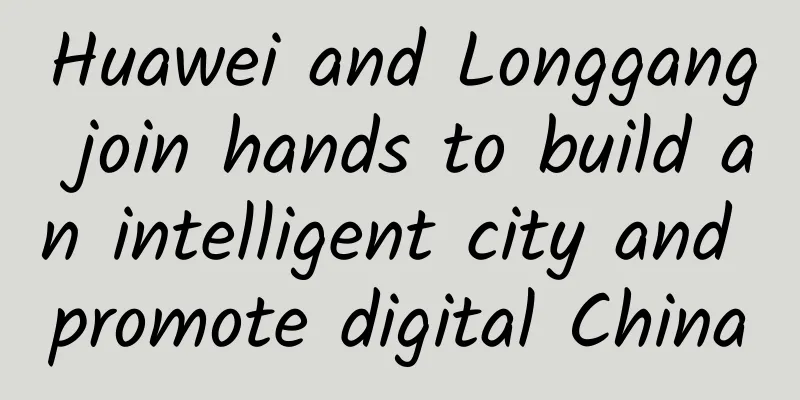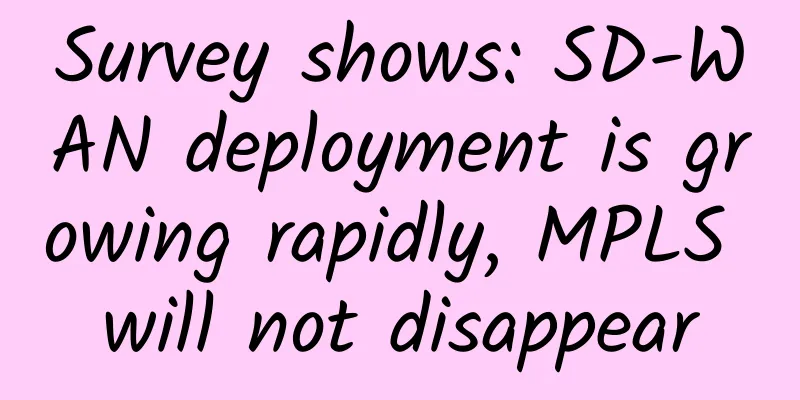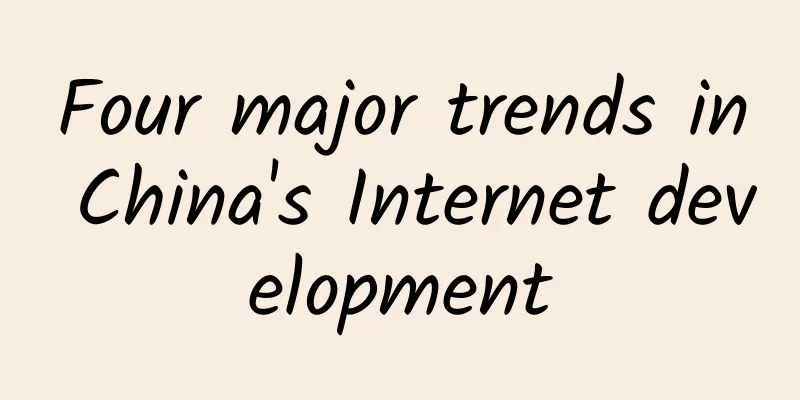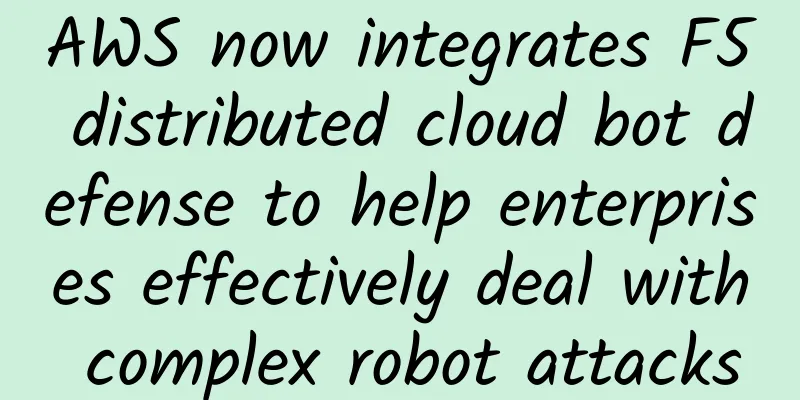Huawei and Longgang join hands to build an intelligent city and promote digital China

|
On November 16, the China (Shenzhen) Smart City Summit was held in Shenzhen under the guidance of the National Information Center, Shenzhen "Digital Government" Reform and Construction Leading Group Office and Shenzhen Municipal Economic, Trade and Information Commission, and co-hosted by the Longgang District People's Government and Huawei. A total of more than 700 city customers and ecological partners attended the summit. Zhou Min, deputy director of the National Information Center, Xu Songming, deputy secretary-general of the Shenzhen Municipal People's Government, Zhang Yong, secretary of the Longgang District Committee of Shenzhen, Chen Guangwen, deputy district mayor, Professor Guo Renzhong, academician of the Chinese Academy of Engineering, and Yang Ping, vice president of Huawei EBG China, attended the summit. Focusing on the latest industry trends and practical experience of smart cities, industry experts and representatives from cities such as Shenzhen and Shanghai Huangpu had in-depth exchanges with Huawei and ecological partners, which will play a positive role in promoting the development and construction of smart cities. At present, the construction of smart cities is facing a new pattern of innovation and breakthrough. The construction of new smart cities is full of vitality. However, there are still many areas that need innovation and improvement for the new situation, new tasks and new requirements of my country's informatization work. Zhou Min, deputy director of the National Information Center, suggested: First, to build a new type of smart city with people as the center, we must change the development concept and adhere to the people-centered approach; second, to strengthen innovation-driven development, we must keep up with the wave of technological change, constantly use new technologies and new means, and constantly create new functions and connotations; third, to adhere to integrated development, we must form a policy synergy to avoid duplicate construction, fragmentation and other problems, so as to achieve high-level construction and high-quality development of smart cities. Zhou Min, Deputy Director of the National Information Center This year marks the 40th anniversary of reform and opening up, the 39th anniversary of the establishment of Shenzhen Special Economic Zone, and the 20th anniversary of the High-Tech Fair. Shenzhen has produced a number of high-tech enterprises represented by Huawei. Huawei's cloud computing, big data, Internet of Things, and AI technologies originated in Shenzhen and also serve Shenzhen. Xu Songming, Deputy Secretary-General of the Shenzhen Municipal People's Government, said in his speech: Smart cities represent the new trend of future urban development, carry new expectations for the development of science and technology cities, add new impetus to high-quality development, and promote new changes in human production and lifestyle. The Shenzhen Municipal Party Committee and Municipal Government have deployed the construction of smart cities as a key task to promote the acceleration and improvement of information technology measures such as Internet+, Internet of Things, and cloud computing, and comprehensively promote mobile government, face recognition, one-number perception of Shenzhen, and one-click imagination of the future, so as to strive to make life better. The summit jointly organized by the Longgang District Government and Huawei brought together authoritative experts and leaders in the industry to share good experiences and practices in building smart cities. We will fully absorb the results of this summit, accelerate the linkage between enterprises, comprehensively improve urban modernization, and explore the construction of smart cities in my country. Xu Songming, Deputy Secretary-General of Shenzhen Municipal People's Government Chen Guangwen, deputy district head of the Longgang District People's Government of Shenzhen, said: In order to fully implement the national strategic deployment of "network power, digital China, and smart society", Longgang District fully cooperated with Huawei in the overall framework of Smart Shenzhen in 2013 and started the construction of smart city. After several years of steady progress, the overall framework of "one center", "two networks", "three platforms", "four fields", "five systems", and "N applications" has been implemented. A number of smart applications that improve urban management and people's livelihood services have been built. A fruitful and replicable "Longgang experience" has been formed.
Chen Guangwen, Deputy District Mayor of Longgang District People's Government of Shenzhen In order to help more customers and partners jointly promote the intelligent upgrade of cities and jointly promote the construction of Digital China, Huawei released the new concept of "Urban Intelligence" yesterday. Yang Ping, Vice President of Huawei EBG China, said: Urban Intelligence can realize the digitization of all elements of the city, real-time visualization of the city status, and the coordination and intelligence of urban management decisions, which will help the city's "scientific, refined, and intelligent" management, and is the new form of future cities. Data perception, connection, and cloud computing are only the foundation for smart cities, while artificial intelligence is the engine for realizing urban intelligence and the best way to monetize past investments in urban digital infrastructure. Huawei's full-stack, full-scenario AI solution opens Huawei's continuous investment and breakthroughs in chips, algorithms, and other fields over the past 30 years to a wide range of application developers through application enablement interfaces, which will greatly reduce the threshold for customers and partners to use Huawei's artificial intelligence capabilities.
Yang Ping, Vice President of Huawei EBG China Information and communication technology is profoundly changing the cities we live in and has become an important element of our lives. Academician Guo Renzhong of the Chinese Academy of Engineering introduced in his report that the process of urban development and change has successively gone through the natural city paradigm, the humanistic city paradigm, and the ecological city paradigm. Many urban diseases are becoming increasingly prominent. At present, only smart cities can solve these urban diseases. Smart cities have been recognized as the urban paradigm of the future. The smart city paradigm is a new urban paradigm supported by new technologies such as big data, cloud computing, artificial intelligence, and the Internet of Things in the new ICT era. Building an urban intelligent body through new ICT technology is an effective way to create a smart city paradigm, a new model of urban governance, a new form of urban economy, a new way of urban life, and a new system of urban science.
Academician Guo Renzhong of the Chinese Academy of Engineering Technological innovation is only a means. The goal of smart city construction is to continuously improve the level of urban governance through technological means. Feng Kui, a researcher at the Urban Center of the National Development and Reform Commission and secretary-general of the Academic Committee, said: Technological innovation can drive and improve the level of urban governance. At the same time, the demand for urban governance can also drive technological innovation. The two interact with each other. There are five basic trends in urban governance: a larger scope of governance, higher precision of governance, lower cost of governance, more participation in governance, and simpler procedures for governance. This has put forward demands for smart city construction and pointed out the direction for technological innovation. We must avoid the misunderstanding of technological innovation determinism and governance demand determinism, and promote dialogue between technological innovation and urban governance and city managers.
Feng Kui, Researcher of the Urban Center of the National Development and Reform Commission and Secretary-General of the Academic Committee Release of city intelligence to help build a digital China At the summit, Huawei grandly released the city intelligent body solution to help build a digital China. Zhou Min, deputy director of the National Information Center, Feng Kui, researcher of the Urban Center of the National Development and Reform Commission and secretary-general of the Academic Committee, Chen Chaoxiang, director of the Information Department of the Shenzhen Municipal Government Office, Li Zhengxiang, director of the Information Department of the Shenzhen Economic and Trade Information Commission, Le Wenzhong, deputy director of the Shenzhen Longgang District Big Data Management Bureau, Xu Xiao, chief technology officer of Shenzhou Information, and Zhang Yande, president of Huawei EBG China Smart City, jointly released Huawei's series of city intelligent body solutions, including urban transportation intelligent body, government service intelligent body, public safety intelligent body, industrial manufacturing intelligent body, etc. Looking to the future, Huawei will also work with more partners to release more city intelligent bodies and draw a new blueprint for digital China. Yao Jiankui, Chief Engineer of Smart City, Huawei EBG China, said: In the process of building "urban intelligent body", Huawei provides three capabilities: First, Huawei uses its technical capabilities in IOT to build the IoT perception layer, realize full IoT perception, data preprocessing, and front-end intelligence; second, build ICT infrastructure and industry enabling platform based on Huawei Cloud, where ICT infrastructure includes cloud data center, basic network, etc., and industry enabling platform includes the coordinated construction of communication resources such as big data, video, IoT, GIS, converged communication, etc. in the city dimension, as well as digital platform capabilities for data enablement, application enablement, and collaborative enablement; third, based on the full-stack full-scenario AI solution, deeply integrated with industry scenarios, to build an intelligent body for the industry field. The full stack is a technical function perspective, which refers to the full-stack solution including chips, chip enablement, training and reasoning frameworks, and application enablement. The full scenario refers to deployment environments including public cloud, private cloud, various edge computing, IoT industry terminals, and consumer terminals. Huawei opens the above capabilities to ecosystem partners through the platform, and works with ecosystem partners to build scenario-based training models for different scenarios in different urban fields from the dimensions of computing intelligence, perceptual intelligence, cognitive intelligence, etc., to improve efficiency and output, and build intelligent entities in different industry fields.
Yao Jiankui, Chief Engineer of Smart City, Huawei EBG China Transform and practice smart cities to help cities transform into digital cities As a frontier of reform and opening up, Shenzhen is at the forefront of smart city construction in terms of government affairs, benefiting the people, and promoting business, becoming a new benchmark city for smart city construction. Shenzhen has taken the promotion of e-government and the construction of a new smart city as its starting point, and has cooperated with Huawei to build a unified government cloud platform, construct an intensive and shared information application support system, and build a unified government information resource sharing system for the entire city. Chen Chaoxiang, Director of the Information Technology Division of the Shenzhen Municipal People's Government Office, introduced that Shenzhen, in accordance with the State Council's "Internet + Government Services" and the provincial government's "Digital Government" reform deployment, based on the national integrated online government service platform and the province's unified public support system, uses Huawei's advanced 5G, network, cloud computing, big data and AI technologies to connect with national and provincial platforms in five aspects, including government extranet, cloud platform, information resource sharing platform, data open platform, and online government service platform. Through the implementation of "12345678", we will build a "digital government" that satisfies citizens: deeply promote the "second approval" model, and strive to improve the government's administrative efficiency and public service level; recreate the "Shenzhen 90" reform process to achieve the most simplified subject handling process; publish the "non-face-to-face approval" and "full-process handling" lists to comprehensively improve people's well-being; open the "i Shenzhen" public account, and citizens and enterprises actively participate in the construction of digital government.
Chen Chaoxiang, Director of Information Technology Division, General Office of Shenzhen Municipal People's Government Li Zhengxiang, director of the Information Technology Department of Shenzhen Municipal Commission of Economy, Trade and Information, introduced that Shenzhen's information resource sharing platform exchanges more than 20 million pieces of data every day. It uses information sharing to build an Internet-based information benefit service system, and a unified mobile benefit service platform provides citizens with one-stop services based on their palms. Based on the urban operation management center, a new mode of urban operation management that combines peacetime and wartime is built; based on the urban big data center provided by Huawei Cloud and big data platform, it assists in the site selection and planning of community health centers, free education and other livelihood services; innovatively uses the mobile Internet technology based on Huawei Cloud to implement intelligent management of on-street parking; realizes a map of the city's water environment and online monitoring of pollution sources to improve environmental governance capabilities. By 2020, the "six ones" development goals will be achieved, namely "one map for comprehensive perception, one number to travel all over Shenzhen, one key to know the overall situation, integrated operation linkage, one-stop innovation and entrepreneurship, and one screen to enjoy life intelligently", and a national new smart city benchmark city will be built to reach world-class level.
Li Zhengxiang, Director of the Information Technology Department of Shenzhen Municipal Economic and Trade Information Commission Le Wenzhong, deputy director of the Shenzhen Longgang District Big Data Management Bureau, said: Longgang District has been in strategic cooperation with Huawei since 2013 and has taken the lead in launching the construction of a smart city in accordance with the principles of demand-oriented, people's livelihood-oriented, infrastructure-first, and emergency-first. It provides a mechanism guarantee through top-level design; builds a network, and provides basic platform support with software and hardware; mines data capabilities through the big data platform; establishes a number of smart applications that improve government, facilitate the people, benefit enterprises, and promote business, and creates a new model of smart city construction with Longgang characteristics of crowdfunding, co-construction, and sharing of "government society".
Le Wenzhong, Deputy Director of Shenzhen Longgang District Big Data Management Bureau Huangpu District, as the core area of Shanghai's central urban area, represents Shanghai's "heart, window and business card". Huawei started with top-level design, designed the overall framework of the new smart city for Huangpu District, and provided an overall solution. Chen Yi, deputy director of the Science and Technology Commission of Huangpu District, Shanghai, said: Huangpu District will focus on building a smart Huangpu "city brain" that integrates "Internet of Things, Internet of Numbers, and Internet of Intelligence", and actively promote the implementation of key projects at the basic layer, resource layer, and platform layer. Break through departmental data barriers, build a comprehensive management platform across departments and fields, realize data classification display and hierarchical management, expand collaborative application scenarios, and improve government management efficiency.
Chen Yi, Deputy Director of the Shanghai Huangpu District Science and Technology Commission Platform and ecology, work together with ecological partners to create an intelligent city In the field of smart cities, Huawei opens up its platform capabilities and works with ecosystem partners to provide customers with comprehensive solutions for urban intelligence. Xu Xiao, Chief Technology Officer of Shenzhou Information, said: Shenzhou Information and Huawei jointly launched the IoT solution for smart cities, with Huawei providing platform-level products such as the IoT connection management platform and the network management platform; Shenzhou Information deeply integrated Huawei products and solutions, and combined with self-developed API open platforms, smart data factories and other technical products to create a city perception management platform. Based on the core architecture of "Internet of Things + Digital Connection + Intelligent Connection", it provides service support for urban IoT business operations, facility operations, and facility operation and maintenance, bringing personalized IoT management and services, perception visualization and other application experiences to city managers. The solution has been successfully implemented in the IoT project in the core area of Beijing's sub-center. In the future, it will focus on expanding comprehensive scenarios such as smart cities, smart parks, and beautiful villages to achieve perception coordination and IoT management.
Xu Xiao, Chief Technology Officer of Shenzhou Information At the "Smart City Artificial Intelligence and Big Data" micro forum held in the afternoon, Huawei also joined hands with Dehna, Oriental Fortune and iFlytek to share its construction experience and leading solutions in the field of smart cities around the strategic practice path of "Smart City Artificial Intelligence and Big Data". It also carried out in-depth exchanges and discussions on top-level design, urban operation centers, artificial intelligence applications, etc., and through in-depth sharing of methods and cases from multiple dimensions, it provided excellent practical experience for building a safe, beautiful, healthy, digital China and a smart society. |
<<: 5G+IoT, why will it usher in a completely different era of “operator of everything”?
Recommend
[6.18] Megalayer: Hong Kong CN2 independent server from 400 yuan/month, US cluster server from 888 yuan/month
Megalayer's 618 promotion officially started ...
The Ministry of Industry and Information Technology introduced a spectrum auction mechanism, which is a new model for 5G spectrum allocation.
Recently, my country promulgated the newly revise...
The fourth largest operator enters the market, and the 5G market welcomes a new growth point
It has been three years since my country issued f...
China Mobile Capital leads the investment in Unisplendour Cloud, completes 600 million yuan financing and focuses on the government and enterprise market
On September 15, Unisplendour Cloud Technology Co...
DogYun New Year's Day promotion: 30% off on Elastic Cloud, 20% off on Classic Cloud, 100 yuan off per month for dedicated servers, 10 yuan free for every 100 yuan recharged
DogYun (狗云) has launched a promotional event duri...
How to use fiber optic patch cords?
1. What is fiber jumper? Fiber optic patch cords ...
Learn about routers, switches, and network hardware
Today we're taking a look at home network har...
WiFi passwords are always cracked? Here are some tips to help you avoid WiFi hacks
With the development of mobile Internet technolog...
Let's talk about virtual mobile network security
1. Introduction With the rise of 5G technology, v...
Gartner: The global low-code development technology market will grow significantly by 23% in 2021
[[383115]] According to Gartner's latest fore...
Detailed explanation of SSL protocol communication process and symmetric encryption and asymmetric encryption in HTTPS
[[276508]] Symmetric encryption The so-called sym...
This article explains in detail the discovery and processing of BigKey and HotKey in Redis
[[420295]] 1. Introduction When using Redis, we o...
Scenario Innovation Smart Energy | Ruijie Debuts at 2019 Petroleum and Petrochemical Information Technology Conference
From May 15th to 16th, the "2019 China Petro...
Spectrum analysis of the four major 5G operators in China, who has the best resources?
As we all know, starting from 5G, the country has...
Wi-Fi 7 is on the way, how powerful is it?
In 2019, Samsung and Apple were the first to intr...









